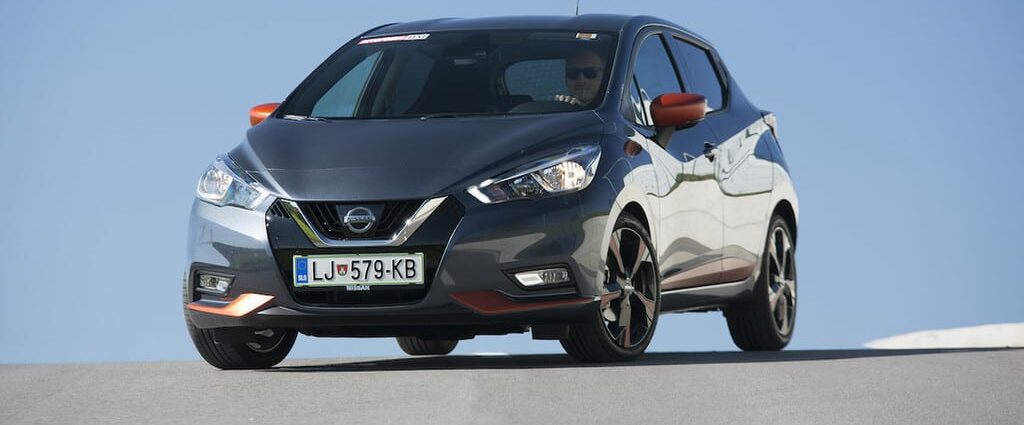
Test: Nissan Micra 0.9 IG-T Tekna
Content
Micra has been on the automotive market since 1983, a good three and a half decades, and has gone through five generations in that time. The first three generations were very successful in Europe, selling 888 1,35 units of the first generation, the most successful second generation reaching sales of 822 million units, and 400 of them were shipped from the third generation. Then Nissan made an unreasonable move and fourth. – The Micro generation, manufactured in India, was designed to be too global a car to be able to simultaneously successfully compete in both the least and most demanding automotive markets. The result was, of course, horrific, especially in Europe: in just over six years, only about XNUMX women in the fourth generation have driven on European roads.
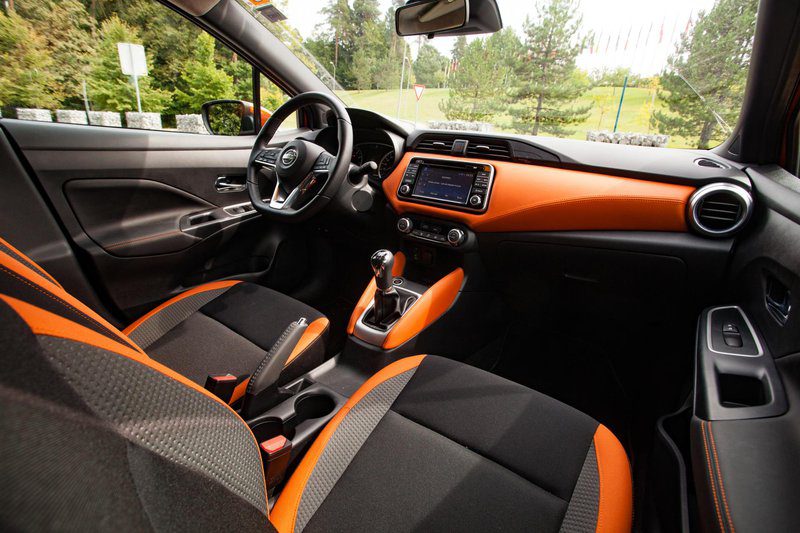
Thus, the fifth generation Nissan Micro was completely separated from its predecessor. Its shapes were carved in Europe and for Europeans, and it is also produced in Europe, in Flains, France, where it shares conveyor belts with the Renault Clio.
Unlike its predecessor, the new Micra is a completely different car. We can say that with its wedge shape it is almost close to the small Nissan Note minivan, which does not yet have a announced successor, if one appears at all, but we also cannot compare it with it. Of course, the designers took inspiration from Nissan's contemporary design reference points, which are mostly reflected in the V-Motion grille, while the coupe body accent was complemented by a tall rear window handle.
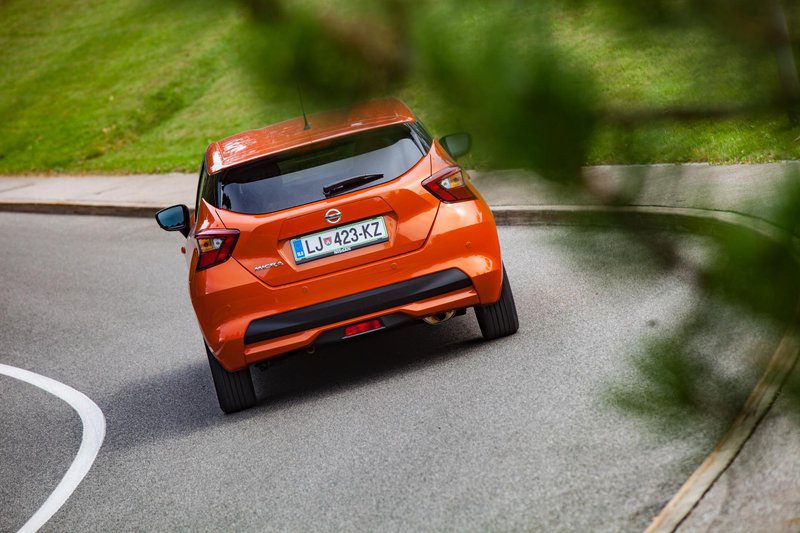
The new Micra is first and foremost a larger car, which, unlike its predecessor, which belongs to the lower end of the small city car class, takes its first place. This is especially noticeable in the cabin, where neither the driver nor the front passenger will in any case be crowded. That the Micra is also a new-generation small city car, despite being larger, is unfortunately known from the rear seat, where adults can run out of legroom fairly quickly if there are taller passengers in front. If there is enough space left, sitting on the back of the bench will be quite comfortable.
We also note a detail that is especially important for families with several children. The front passenger seat, in addition to the rear seat, is also equipped with Isofix mounts, so mom or dad can carry three children in the car at the same time. As such, the Micra is definitely setting itself up as a second, and with more modest expectations, perhaps even the first family car.
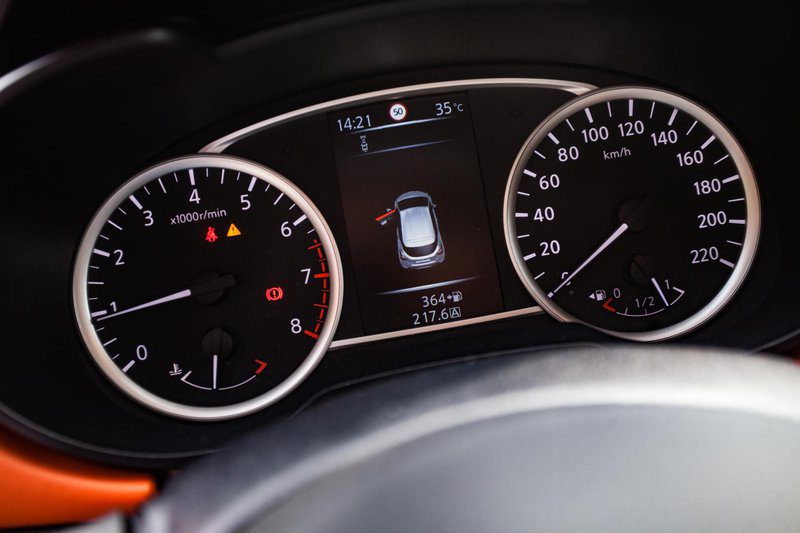
The trunk with a base 300 liters and an increase of just over 1.000 liters allows it to be transported at a solid level. Unfortunately, it can only be increased in the classic way, without a movable back bench or flat loading floor, and the versatile shape has also resulted in relatively small rear doors and a high loading edge.
The passenger compartment is arranged much less plastically than that of the predecessor of the "world character". You could say they went to Nissan using soft faux leather, even too far. It provides comfort in the places where we touch it with parts of the body. Particularly pleasing is the soft upholstery of the center console in the place where we most often lean with our knees. Less sensible is the soft padding of the dashboard, which is really just for looks. It manifests itself mainly in color combinations, for example in the Micra test with the bright orange color of the Orange interior personalization package, which pleasantly enlivens the interior. Nissan says there are over 100 color combinations for our taste.
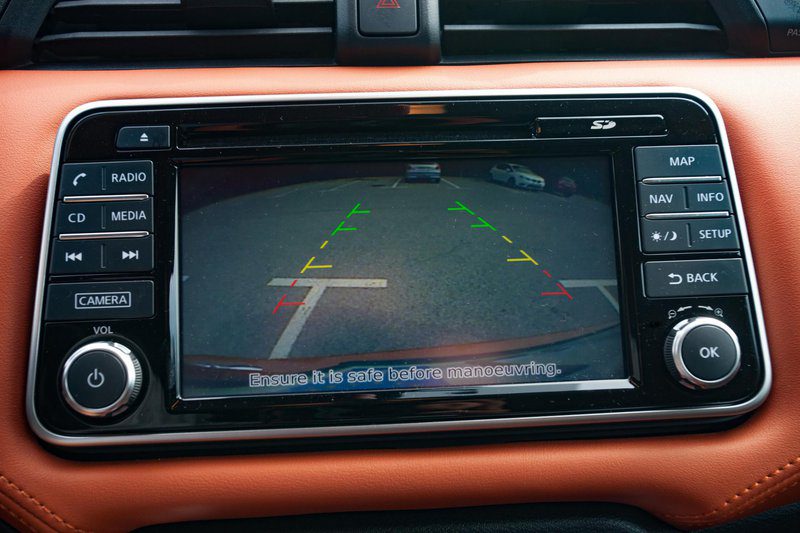
The driver feels good “at work”. Contrary to current guidelines, speedometers and engine rpm are analog, but large and easy to read, with an LCD display on them where we can find all the important information so we don't have to look at the large, touch-sensitive screen that dominates the dashboard. The steering wheel also sits well in the hand and has a lot of switches, which are unfortunately also quite small, so you might be pushing the wrong way.
At the same time, the dashboard is dominated by a large touchscreen with mixed, partly tactile and partly analogue controls. The controls are intuitive enough so as not to interfere with driving, and the connection with smartphones, unfortunately, is partial, since only the Apple CarPlay interface is available. Andorid Out is not and is not expected. We can also highlight the Bose Personal audio system with additional speakers in the driver's headrest that help improve the quality of the music you listen to. Forward visibility is solid, and the wedge shape unfortunately forces you to turn to the rearview camera or 360-degree view, if available, for assistance when reversing.
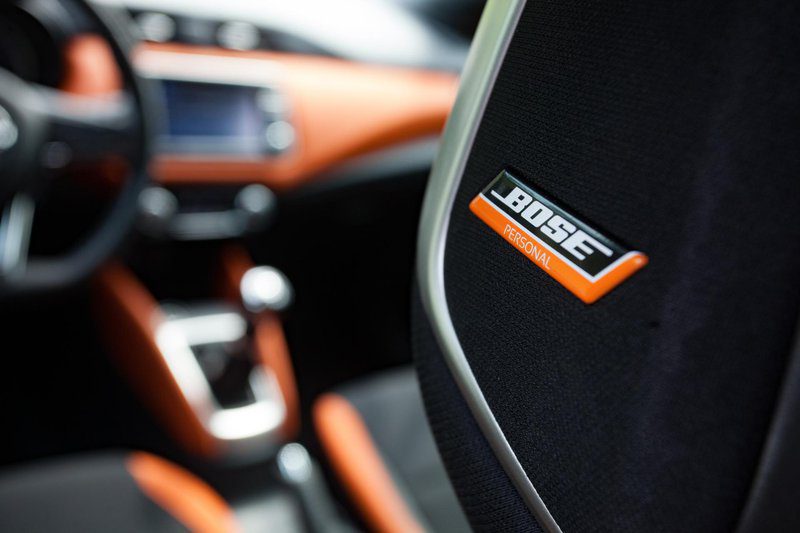
What about driving? The increased dimensions of the new Micra compared to its predecessor contributed to a more neutral position on the road, neutral enough for the Micra to fully meet the demands of driving on city streets and intersections without being intimidated by driving on more difficult roads. The steering wheel is accurate enough, and leads the turns, even if you don't overdo it. In the event of a crisis, of course, ESP intervenes, which also has a "quiet assistant" in the Micra called Trace Control. With the help of the brakes, it changes the direction of travel slightly and provides smoother cornering. Intelligent emergency braking is already available as standard, but only to detect other vehicles, as it only recognizes pedestrians in a Micra with better Tekna equipment, for example.
The driving performance of the Micra is also supported by the engine, a 0,9-liter turbocharged three-cylinder engine. With a maximum output of 90 horses, on paper it does not flaunt power, but in practice it surprises with its responsiveness and readiness for acceleration, which allows it to fully meet the requirements of movement, especially in urban conditions. The situation is different on the slopes, where, despite his good will, he runs out of power and requires a downshift. The six-speed transmission may not be affected by sixth gear, which brings more peace of mind to the lightly protected three-cylinder engine, especially during highway cruising, but even so, the Micra in this configuration coped with everyday transport duties and with 6,6 liters of fuel. there was not much gasoline for 100 km of the road.

The test Micra with the highest Tecna equipment, orange metallic color and orange personalization package costs 18.100 12.700 euros, which is a lot, but you can also get it for a more passable 71 euros if you are satisfied with the reliable base Visia equipment and the base XNUMX-strong. atmospheric three-cylinder liter. However, the Micra stands above the mid-range price bracket as it is offered by Nissan as a kind of "premium car". Let's see how customers react to this in a highly competitive environment.
text: Matija Janezic · photo: Sasha Kapetanovich
Read more:
Nissan Juke 1.5 dCi Agency
Nissan Note 1.2 Accenta Plus Ntec
Nissan Micra 1.2 Accenta Look
Renault Clio Intens Energy dCi 110 – price: + XNUMX rub.
Renault Clio Energy TCe 120 Intens

Nissan Micra 09 IG-T Tekna
Basic data
| Sales: | Renault Nissan Slovenia Ltd. |
|---|---|
| Base model price: | 17,300 € |
| Test model cost: | 18,100 € |
| Power: | 66kW (90 KM) |
| Acceleration (0-100 km / h): | 12,1 with |
| Maximum speed: | 175 km / h |
| Mixed flow ECE: | 5,3l / 100km |
| Guarantee: | General warranty 3 years or 100.000 km, option Extended warranty, 12 years anti-rust warranty. |
| Oil change every | 20.000 km or one year. km |
Cost (up to 100.000 km or five years)
| Regular services, works, materials: | 778 € |
|---|---|
| Fuel: | 6,641 € |
| Tires (1) | 936 € |
| Loss of value (within 5 years): | 6,930 € |
| Compulsory insurance: | 2,105 € |
| CASCO INSURANCE (+ B, K), AO, AO + | 4,165 ( |
| Calculate the cost of auto insurance | |
| Buy up | € 21,555 0,22 (km cost: XNUMX €) |
Technical information
| engine: | 3-cylinder - 4-stroke - in-line - turbo-petrol - front transverse mounted - bore and stroke 72,2 × 73,2 mm - displacement 898 cm3 - compression 9,5:1 - maximum power 66 kW (90 l .s.) at 5.500 rpm - average piston speed at maximum power 13,4 m / s - power density 73,5 kW / l (100,0 l. fuel injection - exhaust turbocharger - charge air cooler. |
|---|---|
| Energy transfer: | Power transmission: engines front wheel drives - 5-speed manual transmission - I gear ratio 3,727 1,957; II. 1,233 hours; III. 0,903 hours; IV. 0,660; V. 4,500 – differential 6,5 – rims 17 J × 205 – tires 45/17 / R 1,86 V, rolling circumference XNUMX m. |
| Capacity: | Performance: top speed 175 km/h - 0-100 km/h acceleration in 12,1 s - average fuel consumption (ECE) 4,8 l/100 km, CO2 emissions 107 g/km. |
| Transportation and suspension: | Carriage and suspension: sedan - 5 doors, 5 seats - self-supporting body - front individual suspensions, spring legs, three-spoke transverse guides, stabilizer - rear axle shaft, screw springs, telescopic shock absorbers, stabilizer - front disc brakes (forced cooling), rear drum, ABS, mechanical parking brake on rear wheels (lever between seats) - rack and pinion steering, electric power steering, 3,0 torsion between extreme points. |
| Mass: | Weight: unladen 978 kg - Permissible total weight 1.530 kg - Permissible trailer weight with brake: 1200 kg, without brake: 525 kg - Permissible roof load: np |
| External dimensions: | External dimensions: length 3.999 mm - width 1.734 mm, with mirrors 1.940 mm - height 1.455 mm - copper sleep distance 2.525 mm - front track 1.510 mm - rear 1.520 mm - driving radius 10,0 m. |
| Inner dimensions: | Internal dimensions: front longitudinal 880-1.110 mm, rear 560-800 mm - front width 1.430 mm, rear 1.390 mm - ceiling height front 940-1.000 mm, rear 890 mm - front seat length 520 mm, rear seat 490 mm - trunk 300-1.004 l - steering wheel diameter 370 mm - fuel tank 41 l. |
Our measurements
| Measurement conditions: T = 25 ° C / p = 1.063 mbar / rel. vl. = 55% / Tires: Bridgestone Turanza T005 205/45 R 17 V / Odometer status: 7.073 km | |
| Acceleration 0-100km: | 14,1s |
|---|---|
| 402m from the city: | 19,4 years ( 118 km / h) |
| Flexibility 50-90km / h: | 10,2s (IV.) |
| Flexibility 80-120km / h: | 17,6s (V.) |
| Maximum speed: | 175km / h |
| test consumption: | 6,6 l / 100km |
| Fuel consumption according to the standard scheme: | 5,3 l / 100km |
| Braking distance at 130 km / h: | 64,2m |
| Braking distance at 100 km / h: | 37,2m |
| AM table: | 40m |
| Noise at 90 km / h in 5rd gear | 59dB |
| Noise at 130 km / h in 5rd gear | 66dB |
| Test errors: | unmistakable |
Overall rating (313/420)
The Micra has come a long way since the last generation. Like a little family car
he does his job well.Exterior (15/15)
Compared to its predecessor, the new Micra is a car that Europeans love,
which certainly catches the eye of many.Interior (90/140)
The interior is decorated quite lively and pleasing to the eye. The feeling of spaciousness is good
only on the back bench there is a little less space. Worried about the slightly crowded buttons on
steering wheel, otherwise the steering is pretty intuitive.Engine, transmission (47
/ 40)The engine looks weak on paper, but when combined with a five-speed gearbox,
com turns out to be pretty lively. The chassis is absolutely solid.Driving performance (58
/ 95)In the city, the 0,9-liter three-cylinder Micra feels good, but it is not intimidated either.
trips out of town. The chassis handles the demands of everyday driving well.Performance (26/35)
Micra with Better Hardware Tecna isn't exactly cheap, but you'll get one too.
relatively large amount of equipment.Security (37/45)
Safety has been firmly taken care of.
Economy (41/50)
Fuel consumption is solid, the price could be more affordable, and the equipment is available in all modifications.
perfectly normal.
We praise and reproach
form
driving and driving
engine and transmission
transparency back
price
limited space on the back bench